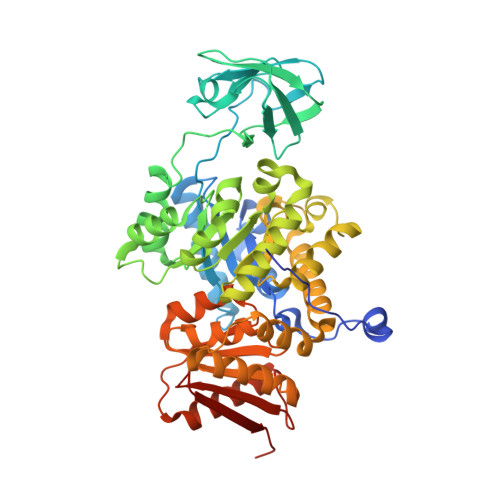Prominent role of cysteine residues C49 and C343 in regulating Plasmodium falciparum pyruvate kinase activity.
Dillenberger, M., Rahlfs, S., Becker, K., Fritz-Wolf, K.(2022) Structure 30: 1452
- PubMed: 35998635
- DOI: https://doi.org/10.1016/j.str.2022.08.001
- Primary Citation of Related Structures:
7Z4M, 7Z4N, 7Z4Q, 7Z4R - PubMed Abstract:
The protozoan parasite Plasmodium falciparum causes the most severe form of malaria and is highly dependent on glycolysis. Glycolytic enzymes were shown to be massively redox regulated, inter alia via oxidative post-translational modifications (oxPTMs) of their cysteine residues. In this study, we identified P. falciparum pyruvate kinase (PfPK) C49 and C343 as amino acid residues essentially involved in maintaining structural and functional integrity of the enzyme. The mutation of these cysteines resulted in an altered substrate affinity, lower enzymatic activities, and, as studied by X-ray crystallography, conformational changes within the A-domain where the substrate binding site is located. Although the loss of a cysteine evoked an impaired catalysis in both mutants, the effects observed for mutant C49A were more severe: multiple conformational changes, caused by the loss of two hydrogen bonds, impeded proper substrate binding and thus the transfer of phosphate upon catalysis.
Organizational Affiliation:
Biochemistry and Molecular Biology, Interdisciplinary Research Center, Justus Liebig University, 35392 Giessen, Germany.




















